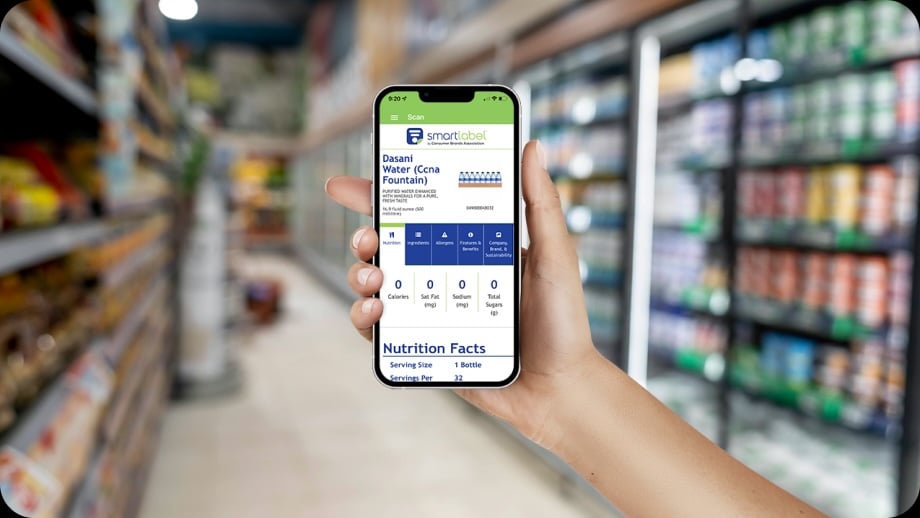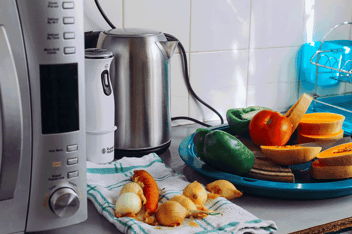Connected Packaging: Smartlabels, QR Codes, & BL.INK


Challenges
Consumers today are not satisfied by a list of ingredients on a product’s packaging; they want detailed information about their purchases. The SmartLabel initiative came about as a way to provide customers with those additional insights.
When a major soda brand decided to deploy SmartLabel QR codes on its products, they turned to BL.INK custom QR codes.
Approach
BL.INK proposed a customized SmartLabel solution that communicates with the brand's packaging software and generates an intelligent link to embed in a custom, secure QR code on product packaging.
This QR code contains a branded short link that redirects the user to a third-party landing page that carries additional information about the product: ingredients, allergens, nutritional information, etc.

Results
- SmartLabel QR codes are implemented on every one of this brand's products in North America
- Easy integration with the existing packaging system
- Dynamic links allow the brand to easily change the destination URL when needed
How an International Soda Brand Seamlessly Implemented SmartLabel QR Codes on Every Product in North America
Consumers demand detailed information about the products they purchase, and brands are working hard to keep up with their expectations.
In 2015, the a major soda brand became one of the first brands in the US to implement SmartLabel QR codes on all its products.
BL.INK’s dynamic QR code solution painlessly integrated with their packaging system, allowing consumers to quickly access product information from their mobile devices.
Custom QR Codes Quench Consumers' Demand for Transparency
Consumers increasingly demand more information about the products they purchase. Consumer goods like Coca-Cola, Nestle, and brands from personal care to pets to household cleaning products strive to share details about ingredients and nutritional information to deliver a great brand experience and trust with consumers.
The FDA first required labels on packaged foods in the early 1990s, but today's consumers want even more information from brands. But printing more details on small packages can be daunting, especially as demands for less packaging prevail.
This is how the SmartLabel initiative came to life in 2015. A consortium of retailers in major grocery categories created the SmartLabel program to “give consumers a way to digitally access more detailed product information than could ever fit on a product label.”
Our client was part of this pioneering group of companies, and they turned to BL.INK to create custom QR codes and dynamic links to bring the program to life.
What Is A SmartLabel?
SmartLabel QR codes are placed on product packaging, allowing consumers to scan a code with their mobile device and get redirected to a page containing additional product information.
Think nutrition, ingredients, allergens, features and benefits, and information about the brand and its sustainability efforts. SmartLabel can also include food provenance details and help monitor freshness by providing consumers with manufacturing and expiry dates.
Our client, a major international soda brand, was one of the first brands in the United States to implement SmartLabel QR codes. The group had been a BL.INK customer since 2009, so when they decided to deploy SmartLabel on their products, BL.INK was excited to take on this new challenge.
The Solution: Easy-to-integrate SmartLabel QR Codes
One of the main challenges was that whatever solution BL.INK proposed had to integrate seamlessly with our client's packaging software. This mission-critical software had been in use long before SmartLabel existed, so it was not designed for this sort of integration.
“This major soda brand needed a way to connect the dots between their product packaging and the SmartLabel program,” explains Andy Meadows, BL.INK’s CEO. “They printed a QR code on the packaging that linked to the landing page containing all of the product’s information (managed by a third party).”
The QR SmartLabel acts as a custom bridge between the store shelf and the online world and provides an enhanced connection between the consumer and this household brand. By scanning a QR code on a product, customers can learn more about the product but also the mission of the company behind it.
“When our client wants to roll out a new product, they say, ‘based on the packaging, promotion, and SKU, what link should we put in this QR code?’ BL.INK creates the perfect link, which redirects to a landing page with the target Smartlabel information. When the consumer scans the QR code, they land on the right page every time,” explains Andy.
BL.INK also identifies which keywords to include in the short link’s URL. The packaging software sends the information about the product (including the UPC number, the flavor, the brand, the sub-brand, the internal tracking, etc.) and BL.INK determines what URL to create and embed within the QR code.
“So we are crafting what we think is the proper SEO URL based on the information that they send us. If they send us five different flavors, we know that that’s a variety pack,” highlights Andy. “We also determine on our end whether it’s an alcoholic product. Which sub-brand? Which domain name should we use? We implement all the logic within BL.INK in terms of where the QR code should be directed.”
Dynamic Link Routing
When our client first implemented SmartLabel across its entire range of products in the US, all the links were redirecting to landing pages hosted on the same website.
However, the company's business model has evolved, and they now partner with Molson Coors to produce their alcoholic beverage lines: Topo Chico Hard Seltzer and Simply Spiked. Instead of having all their links pointing to only one site, they now have product QR codes redirecting to the brands' websites across multiple branded short domains.
“BL.INK was also able to programmatically change all the links for thousands of products that were already in the market as the publishing platform evolved, and we were able to do that in one fell swoop; we did it in a matter of minutes,” says Andy. “BL.INK links provide that flexibility, which is super important to our customers.”
For example, BL.INK dynamic links deliver links to landing pages based on the product identified, in the language based on the consumer's phone language. If a consumer scans a QR code for an alcoholic product in Texas, the dynamic link asks for their birthdate to confirm they're the proper age to visit this page, based on drinking age in Texas.
BL.INK delivers data on QR code scanners, not just page visitors
More accurate data was another essential advantage of the solution that BL.INK implemented for this brand juggernaut.
“While this brand owns the website for their products, they don’t own the websites for their alcoholic beverages’ partners. They rely on Google Analytics for data for their own website, but they rely on their partners to provide insights into the other sites,” explains Andy. “BL.INK sits between all these actors and is the link of record for how many actual scans they receive,” he adds.
For example, Google Analytics could show that 1,000 users landed on a specific product page, but BL.INK’s Analytics platform indicates that 1,200 people actually scanned the QR code for that product on a particular day. Google Analytics counts visitors based on multiple factors, but not all scans count as a session.
“Because of our analytics, our client also knows where geographically the scan came from, what product they were scanning, the frequency of scanning, and more," said Andy. "They get all that insight for their and their partners’ sites in real-time.”
The Takeaway: Connected Packaging That Powers A Deeper Customer-Brand Relationship
With consumers demanding more information about the products they choose to purchase, brands are increasingly looking for ways to provide more transparency and generate more trust.
As a beverage pioneer, our client was at the forefront of the SmartLabel initiative. Today, more and more brands are implementing SmartLabel QR codes on their products to bridge the information gap and create deeper connections with their customers.
BL.INK’s QR SmartLabel solution continues to provide our client with the flexibility and ease of use they need. It also gives the company complete insights into how, when, and where their customers scan their labels.
By scanning a QR code, consumers get easy access to the information they seek and, hopefully, establish a deeper connection with the brand.
BL.INK's enterprise solution delivers unlimited data and makes it easy to enable the perfect brand experience through connected packaging, all on one intuitive platform. Let's talk about a custom solution for your business today.



.jpg?width=352&name=branded-short-links-and-qr-codes-for-products%20(1).jpg)
%20(1).png?width=352&name=Screenshot%202023-01-31%20at%208.27.35%20AM%20(2)%20(1).png)